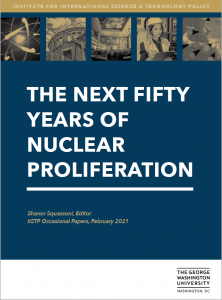The Nuclear Boundaries Initiative
The Nuclear Boundaries Initiative fosters debate about how to reduce risks from nuclear weapons, nuclear material and nuclear equipment. It will challenge the current boundaries regarding how much risk we are willing to accept, the costs, and what benefits we seek to derive from nuclear weapons and nuclear energy. This initiative also challenges the policy boundaries that make it difficult to find creative solutions to problems, whether they are bureaucratic, technical, economic or historic.
Announcing the new edited report:
The Next Fifty Years of Nuclear Proliferation
The Nuclear Boundaries Initiative has aimed to identify areas of US and international nuclear policy and practice where equities overlap and yet are typically treated as separate, distinct issues. In the case of forecasts regarding nuclear weapons proliferation, analyses tend to focus on the strength of the Nuclear Nonproliferation Treaty, national export control and supplier control regimes and nuclear technology trends. This volume certainly covers those issues, but also speculates on how developments in other key areas — missiles, missile defenses, arms control, and emerging technologies – could affect nuclear weapons proliferation. In the world of US policy implementation, nonproliferation experts typically do not overlap with arms control specialists, and traditional analyses treat the problems and solutions as very different from each other. In countries with fewer resources, such stovepiping would be a luxury and, if we consider a trajectory of fewer and fewer nuclear weapons into the future, such stovepiping will be a detriment to a comprehensive solution to eliminating the risk of nuclear weapons.
For more information, please see our publications page.
